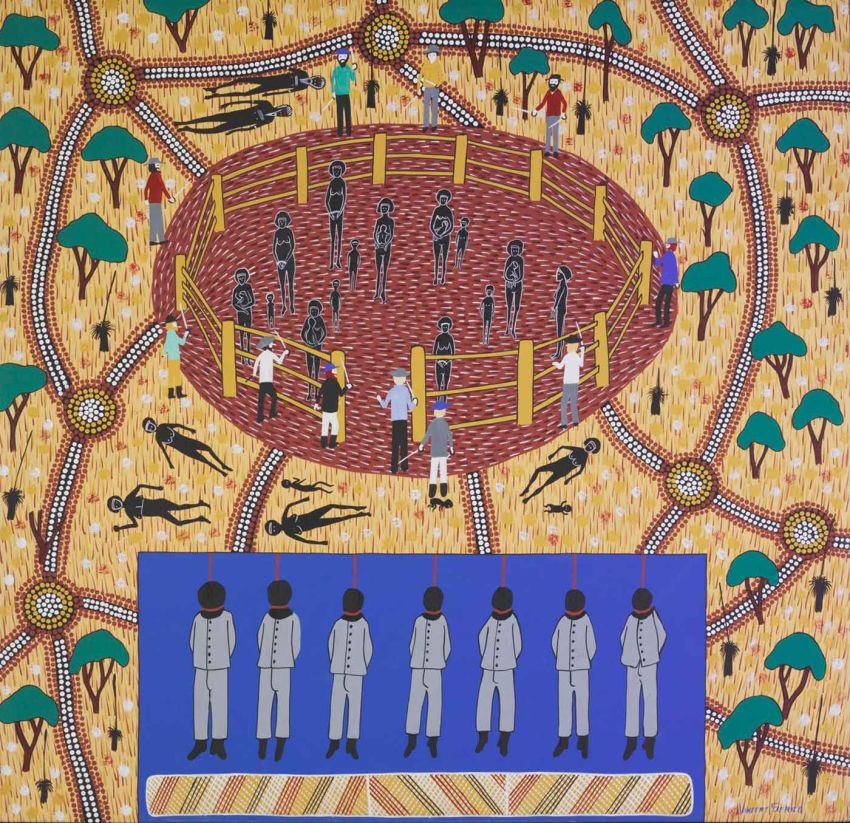
The Anthony Albanese-led Labor government has reignited hope that First Nations peoples will be included in the decision-making process. But the lasting impact of colonisation, embedded in how laws are applied, also has to be addressed.
While Albanese has promised to enshrine a First Nations voice to parliament and commit to the Uluru Statement from The Heart, debate has started on how exactly justice will be delivered.
As Gomeroi woman and caretaker of the Aboriginal Tent Embassy Gwenda Stanley, told ABC's Q+A on June 2, how will changing the constitution “benefit us as Aboriginal people”.
It is vital the new government listens to First Nations peoples, for whom “reconciliation” has not delivered. “For 30 years we’ve been reconciling, 232 years we’ve been reconciling,” Stanley said. “Why are we still trying to integrate into a system that systemically oppresses us?”
One of the latest examples of this structural oppression is the case of 19-year-old Kumanjayi Walker’s murder by Northern Territory police officer Zachary Rolfe in 2019.
Rolfe was the first police officer to stand trial for murder since the Royal Commission into Aboriginal Deaths in Custody in 1991. A coronial inquest will take place in September, but an all-white jury has already handed down a not-guilty verdict.
There have been more than 500 Black deaths in custody since that Royal Commission.
On the eve of the Myall Creek massacre of 1838, where at least 28 Wirrayaraay people were killed by white stockmen and former convicts, it is timely to remember the legalised brutality that accompanied colonisation.
Researchers at the University of Newcastle have produced a comprehensive map of colonial frontier massacres from 1788 to 1930. More than 8300 people were killed in more than 300 massacres over that time, 97% of whom were First Nations people.
Settler diaries, journals, newspaper reports, court reports and personal testimonies helped uncover the truth. The researchers found that the majority of massacres were perpetrated on private property, such as at Myall Creek. They also found that a majority of the massacres were “surprise attacks on Aboriginal camps at rivers, creeks and waterholes”.
Professor Lyndall Ryan, who has been working on the project since 2014, told The Guardian that the map is “not definitive” because so many massacres were “hidden”. “The code of silence about massacres has been almost universal,” she said.
Ryan also specified that many killings were not included in the map because fewer than six people had been murdered — the minimum number to be officially considered a massacre.
The Myall Creek massacre, in north-east New South Wales, is one of the many recorded. After being killed, the Wirrayaraay people were piled up and burned.
Importantly, Myall Creek was the first time the perpetrators were convicted, with seven of the 12 murderers sentenced to death.
A Myall Creek memorial, erected in 2000, has now become a place of mourning and commemoration. Hundreds from across the country are expected to mark the anniversary on the June long weekend.
At a Myall Creek truth-telling in Parramatta on April 30, Ngarrabul Gamilaraay Yuwaalaray Kooma woman Adele Chapman-Burgess criticised the “ignorance” of the frontier wars and called for people to be educated. Keith Munro, co-chair of the National Committee of the Friends of Myall Creek, said “effective reconciliation” must come from an acknowledgement of the country’s “true history”.
There is a direct link between the frontier massacres and police brutality today towards First Nations peoples.
In 1838, only months before the Myall Creek massacre, NSW mounted police commander Major James Nunn and his men massacred more than 50 Gamilaraay people at Waterloo Creek. He also encouraged nearby settlers to “murder any Aboriginal people they came across”.
The NSW mounted police were originally founded to put down First Nations’ resistance to British colonising forces, and they have continued this role, threatening protesters at Invasion Day and Black Lives Matter rallies.
Breaking the “code of silence” surrounding the treatment of First Nations peoples has to include fighting the structural racism that has contributed to the deaths of Kumanjayi Walker, Victoria Nelson, David Dungay jnr, TJ Hickey, Tanya Day, Wayne “Fella” Morrison, Tane Chatsfield, Patrick Fischer, Jai Wright and others.
Green Left wants to help expose the horrific and ongoing treatment of First Nations people. You can help us by becoming a supporter and making a donation to the Fighting Fund.
[The Myall Creek Massacre memorial will take place at 9am, on June 12 at Myall Creek Hall. Click here for details. A national day of action has been called on June 18 by Yuendumu Elders marking the anniversary of the NT Intervention and calling for no more police guns in First Nations communities.]